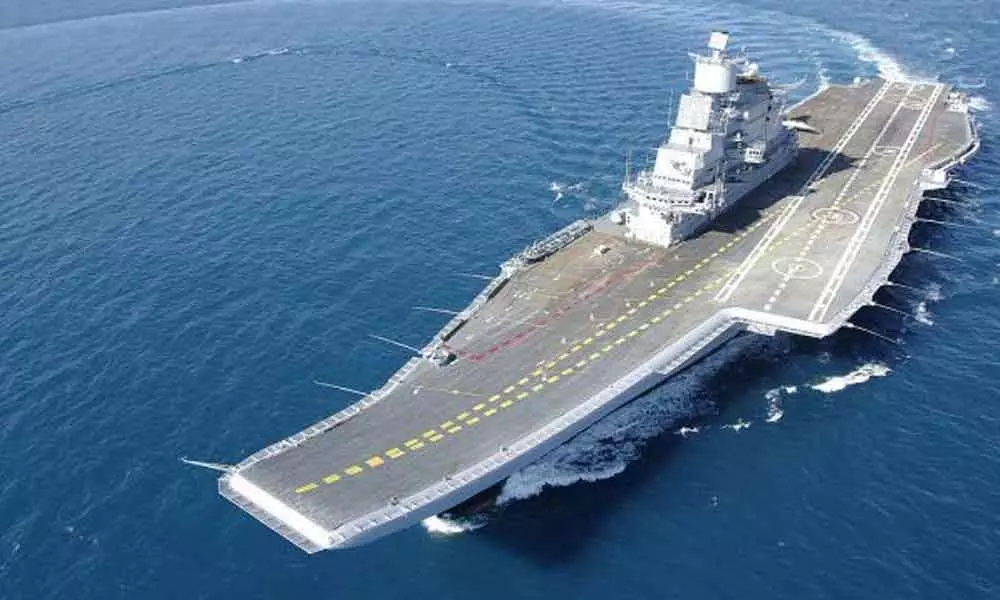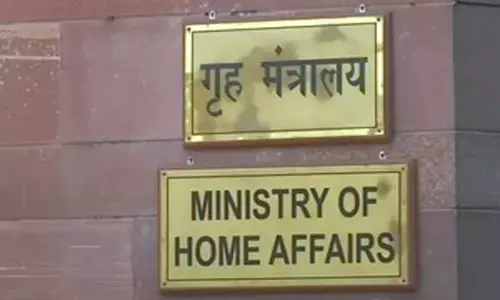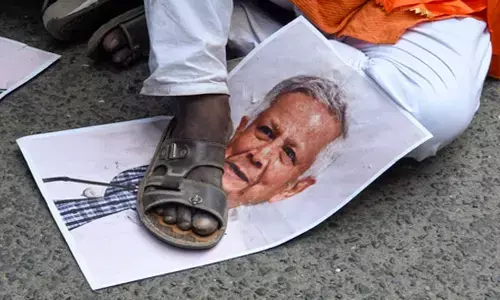A reality check for Indian Navy

A reality check for Indian Navy
Much newsprint was devoted to a naval exercise undertaken between the USA and India. The exercise was designated a two day "passage exercise," and, inarguably, contributed to strengthening bilateral cooperation and military coordination.
Much newsprint was devoted to a naval exercise undertaken between the USA and India. The exercise was designated a two day "passage exercise," and, inarguably, contributed to strengthening bilateral cooperation and military coordination.
Apart from the myriad advantages accrued, the exercise also threw up a somewhat worrying aspect, viz the stark disparity in the two naval forces participating.
While the US Navy fielded a full 'Aircraft Carrier Strike Group' with USS Ronald Reagan, India was represented by two ships and shore based aircraft, and aircraft of the Indian Air Force. Earlier, in March this year, the two navies had undertaken a similar exercise. Then too, while the US Navy had a full carrier strike group participating, India sent a single ship and shore-based aircraft.
Apart from these bilateral exercises, the Indian Navy also took part in a French Navy led multilateral exercise named La Perouse in April, where two ships and shore-based aircraft were deployed, though in this instance other participating nations did not field an aircraft carrier.
Evidently, with its sole aircraft carrier being under maintenance, the Indian Navy is constrained in operating across all dimensions at sea, including during such exercises that bear the potential for valuable lessons and experience to be gleaned. Exacerbating the situation further is the fact that, given the size and complexities of a large ship like an aircraft carrier, its maintenance durations are likely to be of an extended nature.
Consequently, the naval fleet remains hamstrung in undertaking operations related to maritime air power in such periods. Orchestrated deployment of shore-based aircraft over the seas is unlikely to fructify or indeed be available during a live conflict, where there will be concurrent requirement of air operations on land as well.
Clearly, here and now air capability at sea will have to manifest from the sea itself. This operational reality has motivated all significant navies of the world to include aircraft carriers in their forces levels. Military experts across the world are unanimous in the view that aircraft carrier operations are a skill learnt and perfected through sustained practice and long experience. This is borne out by the fact that China, despite having inducted its first aircraft carrier nearly a decade back, is still figuring out carrier operations.
Whatever be the past, unless the relevant agencies wake up and smell the coffee at least at this point, India and its Navy are staring at a bleak operational capability for the near future. A reality check is long overdue and the problem is fast approaching critical mass. An attitude of business-as-usual is unlikely to get the second ship inducted any time soon. We also need to think about what lies in the future, 15 to 20 years down the road. When the existing carrier gets de-inducted. What then? Given the long lead time to build carriers, how will India retain her edge as a major naval power? Well, the answer is obvious.
Woman injured in stabbing attack in Tokyo, suspect at large
Bengal cop booked for murder over mysterious death of woman home guard, SIT to probe case
Staffer recalls horror of 7-kg gold robbery by armed gang in Karnataka’s Hunsur
25-Year-Old Airline Cabin Crew Member Dies At Gurugram Party; Police Begin Investigation















